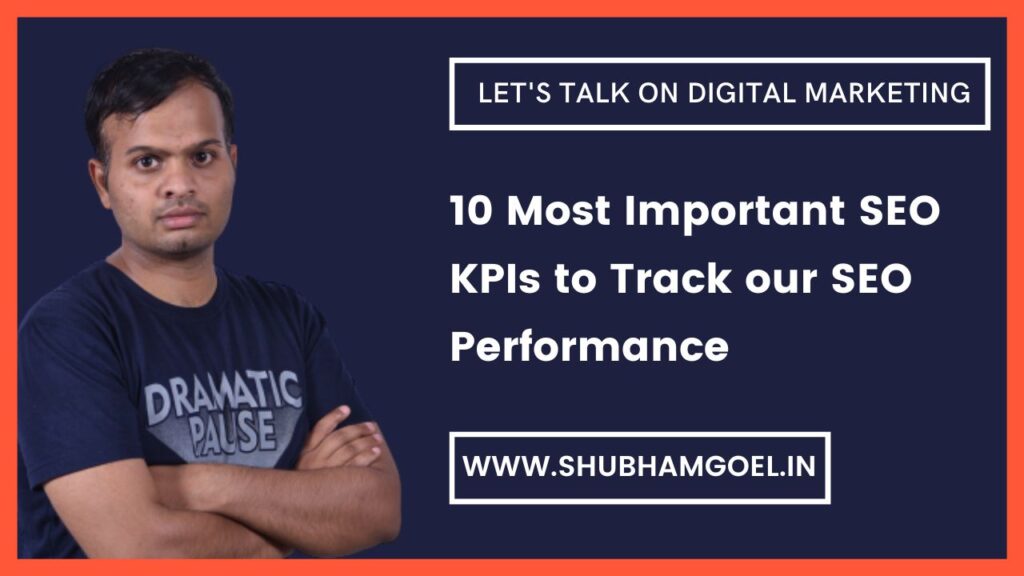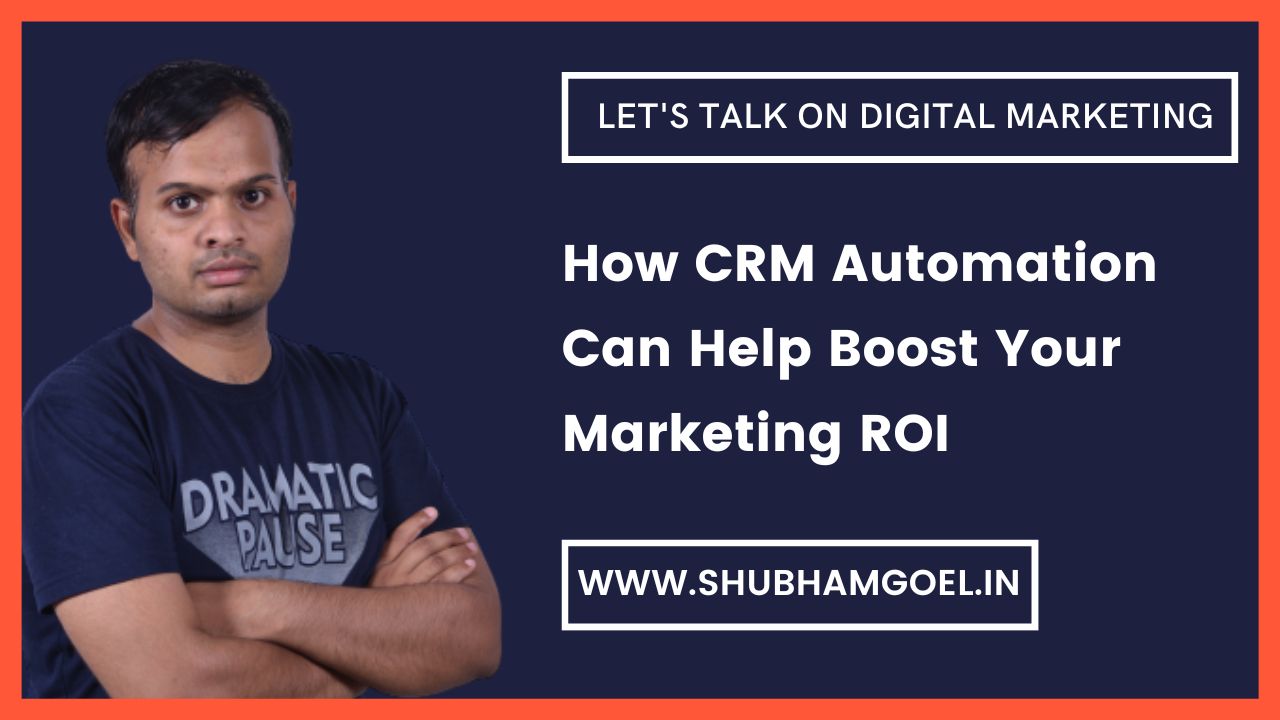In order to make your website more visible in search results, you must improve its operation and appearance through SEO. Ranking in organic search results is specifically important to SEO.
As you can see, Google’s search results are divided into two categories: paid search and organic search. As the name implies, ads are outcomes that buyers purchase through Google Ads.
Quality is the only factor that determines organic results. SEO becomes essential when considering free organic results. Increasing your company’s traffic, leads, customers, and money is easy to do using SEO. SEO is essential since your KPIs should be closely tied to the objectives of your firm.
A key performance indicator (KPI) is a measurable statistic that demonstrates how successfully a firm is reaching important business goals. KPIs are used by organisations to assess their achievement and progress in accomplishing objectives.
Ensure Your Company Appearances in Google Searches for Potential Clients Drive relevant traffic from clients interested in your goods or services to your website
Gaining more organic income gives you a significant competitive advantage.
Let’s go over some fundamental SEO techniques before we discuss the exact procedures you must take to rank higher in Google.
You particularly are aware of stuff like:
- Problems with your pages being crawled, indexed, or rendered.
- How many pages on your site have been indexed by Google?
- How frequently your site shows up in searches
- What search terms you rank for
Is your SEO plan working well? How do you ensure that the results of your efforts will be real? And Why are KPIs important for SEO?
You will be able to respond to each of these queries by monitoring the appropriate performance metrics.
A key performance Indicator (KPI) is a measurable statistic that demonstrates how successfully a firm is reaching important business goals. KPIs are used by organizations to assess their achievement and progress in accomplishing objectives.
KPIs act as a monitoring tool that enables you to determine which initiatives are successful and which are unsuccessful. The greatest method to prevent spending time and money on activities that are not producing the desired results is, most importantly, to monitor the appropriate KPIs.
It’s imperative to keep in mind that KPIs are a type of communication. Remember the fundamentals of communication when formulating KPI Information that is short, obvious, and pertinent is most effective.
What are the Top 10 SEO KPIs to Monitor Our SEO Performance?
KPIs are the main objectives you need to monitor if you want to have a significant impact on your strategic business outcomes. KPIs assist your teams concentrate on what’s important and support your strategy. Target new customers per month is an example of a key performance measure.
Without KPIs, it will be difficult for you to monitor your campaign’s development, make sure your efforts are bearing fruit, or decide whether you are moving in the correct direction for success.
The fact that SEO takes time to produce results and returns is not a secret. However, by establishing KPIs (Key Performance Indicators), you may be better able to show how your strategy will affect the firm.
SEO KPIs should be the foundation of your plan and be used to track and report performance and development, but first, you must determine what exactly you should be tracking
Organic Visibility
Organic search traffic refers to visitors who arrive at your website via unpaid or unsponsored search results.
It’s important in monitoring organic search traffic since it enables you to evaluate how well your website is doing in search results.
The key to bringing in targeted traffic and ultimately generating more quality leads is organic visibility. When you don’t get the results you want as quickly from SEO, it might be discouraging. For others, creating a page that consistently draws in qualified visitors is more important.
Tracking organic search traffic can be done in a number of ways, such as using Google Analytics, displaying an increase in impressions from Google Search Console, or using another web analytics tool.
keyword Ranking
It is still quite helpful for indicating growth. After all, a boost in the ranking of your main keyword indicates that your strategy is beginning to work.
Because pages with higher ranks receive more organic search traffic, keyword rankings are crucial. The words and phrases that enable people to locate your website through search engines are known as your SEO keywords.
The SEO Phrase Ranking statistic calculates your position in the search results for the selected keyword and tracks changes over time. It is the most important KPI in search engine marketing since it shows how well your website performs when it comes to ranking on Google and drawing in organic visitors.
The first result typically receives the majority of clicks in search results for the top 3 terms, according to widely held belief.
Position tracking tools can help you monitor where your primary keywords are showing up in the SERPs.
ROI (Return on Investment)
You can track the ROI (Return on Investment) of each of your marketing projects. You can establish whether the net profit justifies the cost of website optimization by calculating the ROI for SEO. Thus it is important to track the ROI from your SEO efforts. But keep in mind that seeing ROI can take some time—usually six to 12 months or longer.
Knowing your ROI target allows you to repeatedly measure your performance against it, understand its growth and report it.
The main objective of SEO strategy is to generate return on investment for practically every organization. Having an internal team and resources or investing in an agency means getting more value for your money.
Backlinks
Backlinks are used to relate to links between two websites. Backlinks are used as a ranking factor by search engines such as Google because when one website links to another. It shows that the linking website considers the data to be of importance. Both the ranking position and visibility of a site in search engine results can be improved with high quality backlinks (SEO).
Backlinks are links to your website coming from other trustworthy, high-DA websites (DA). If you want to rank on the first page of Google, you need to build backlinks from reputable news sites and blogs.
Backlinks are one of the main ranking variables used by Google, and there are no signs that this will change very soon. You must be aware of the present condition of your link profile in order to see any new links you are acquiring as well as any problems with harmful links emerging.
Backlinks are connections between pages on different websites. An external backlink is created when someone links to your website. Because they signify a site’s approval of another, backlinks are particularly valuable to SEO.
The metrics for links that you should check are:
- Where are all of my backlinks located?
- Number of referring domains overall
- Missing number link
- Volume of links obtained
- How can I detect if they are lethal?
- The authors of harmful backlinks
Monitoring your backlink profile is a crucial component of your site’s SEO strategy because it may reveal a lot about the quality of your website.
You may examine the backlinks to your website using a variety of backlink tracking tools, such as Google Search Console, SEMrush, Ahrefs, and others.
Organic CTR
The click-through rate (CTR) from organic search is one of the most crucial SEO indicators to monitor. It counts the number of times visitors who are looking at your website through search engines click on it.
There is no set direct ranking factor for CTR (click-through rate). However, the truth is that the higher your organic CTR, the more people will click on your listing and visit your sites.
CTR is calculated by dividing the total number of clicks on your advertisement by the total number of times it was displayed
The greater the CTR, the more visitors that clicked on your page after their search; it’s a straightforward metric. Remember that CTR might change depending on a company’s industry and the goods or services they offer.
When it comes to assessing the appropriateness of your title tag and meta description that appear on the SERP, organic CTR truly starts to impact. The CTR of any marketing channel, however, can be impacted by a variety of things. Determine what material your consumers find relevant by focusing on using your click-through rate.
A high CTR shows the efficiency of your search snippets and the relevance of your website to the user’s inquiry. The conversion rate (CTR) of searchers who browse your website is another important conversion indicator because it shows how frequently they become customers or carry out other desired actions.
By checking the “Organic Sessions” and “Organic Conversions” metrics in Google Analytics, you may monitor your organic CTR.
Page Speed
For many reasons, site performance is also important. The usability of your website may be affected at first. If your website takes too long to load, potential buyers may not even bother to check your website.
Second, your efforts at search engine optimization are also affected. Potential customers will never see your website if your pages load slowly because they are unlikely to rank high in search engine results.
Lastly, the conversion rate of your website depends on the page speed. Long loading times on your website increase the likelihood that visitors will leave before becoming paying customers.
It’s important to take a thorough look at your site speed because it has the potential to hurt both your conversion rates and your search rankings.
How can your website’s page speed be improved?
There are many actions you can take to increase the page speed of your website. Some of the most successful are as follows:
- Use a Content Delivery Network (CDN): The servers that make up the Content Delivery Network (CDN) are spread all over the world.
- Your CDN will transfer content from the server that is closest to the visitor’s location when they access your website. As a result, it takes less time to transfer the content from the server to the user’s device.
- Image Optimization: Using large photos can slow down your website. Make sure photos are at least compressed to less than 1MB when utilising them in articles and pages on your website. This makes it possible for a search user to click on your website and load it more quickly.
By using the SEMrush site audit tool and doing frequent crawls, which will reveal any pages deemed slow, you can simply keep on top of these issues.
Bounce Rate
One Google ranking factor is the bounce rate. In fact, one market study discovered a strong correlation between bounce rate and first-page Google rank.
The percentage of visitors who leave your website after reading just one page on your website is known as your bounce rate.
Bounce rate is an important indicator of whether your content is drawing in site visitors and can also be a useful tool to determine how relevant it is to the search queries for which it is ranking.
When a page has a high bounce rate, it usually suggests that viewers are not paying much attention to it, which means that the conversion potential of increasing traffic is often lost. And sometimes, only minor adjustments are necessary to see a noticeable difference, but if you’re not constantly monitoring it, you might not have a chance.
Google Analytics allows you to check the bounce rate of your websites and web pages.
Conversions (Sales and Leads)
The main KPI that many firms base their operations on is a financial return, but it always takes time to see the results. Consequently, you shouldn’t rely simply on ROI.
An organisation, person, or potential sales contact who indicates interest in your products or services is known as a sales lead. Typically, leads are obtained from recommendations from current customers or as a direct result of advertisements or promotions.
The goal of lead conversion is to turn these potential customers into paying, devoted clients by nurturing them and making sure they frequent your website.
A reliable way to show success is to measure and track organic conversions sales, leads, or both, depending on how your firm is set up. After all, it’s simple to link your efforts to a rise in organic conversions.
Just make sure you are aware of the conversion criteria prior to beginning work on a campaign; otherwise, it will be challenging for you to demonstrate increase from the growth that is already being generated.
One approach is to take the average of the conversions you produce in the three months prior to the launch of your campaign as a benchmark to gauge growth.
Google Analytics conversion tracking, lead conversion goal measurement, and ecommerce reports for channel-specific sales tracking are all available.
Average time spent viewing a page
A person who browses your website for a longer period of time can be more interested in your subject than a user who quits right away. When you request additional information or make a purchase, they are more likely to convert.
If you want to increase the average time users spend on your page, you can focus on creating more engaging content or check your competitors’ website performance to find out what other companies do. What are you doing so you can attract a visitor?
Spending more time on the page shows that the information is relevant, easy to read and understand, and is intended for the appropriate audience. The longer a user spends on a page, the more engaged he is. And the more involved someone is, the more likely they are to be persuaded.
How to increase the visit duration on websites?
- Make your posts easy to read.
- Include pictures and videos.
- Compatible with all devices.
- Activate exit intent popup
- Shorten load time.
- Navigate more effectively.
- Link internal pages.
As a result, you should monitor your site’s average time on page on both a site-wide and page-level basis. If you notice a shorter time on page, you should think about strategies to lengthen it.
One of the most popular tools for calculating performance measures such as average time on page is Google Analytics.
Coverage Issues
It enables you to maintain a monitor on the indexing status of your website and notify you about any technical issues preventing the correct crawling and indexing of your pages. According to the index coverage data in Google Search Console, Google has indexed and crawled your webpages.
If you review the Index Coverage (Page Indexing) report frequently, it will be easier to identify, understand, and resolve issues.
You can track these issues regularly using KPIs to keep track of factors that may point to widespread crawling or indexing problems.
Google Search Console enables you to investigate any coverage issues your site is experiencing, also known as “crawl errors.”
and often, these include
- 5xx Server Errors
- 4xx Errors
- page index absent
- indexed but not yet crawled
- Currently not indexed following a search
- duplicate URL entered; genuine URL ignored
- Robots.txt is suppressed
Even if they are not a true sign of success, one of your key objectives should be to eliminate errors so that all of your pages that need to be indexed get indexed.
The Search Console Coverage report details which pages are indexed on your site as well as the URLs that prompted Googlebot to try to crawl and index it.
Therefore, tracking all existing metrics together is a waste of effort. Depending on the objectives of your project, a different set of KPIs should be selected. There are key factors you should take into account when selecting key performance indicators to assess your SEO efforts.
List your objectives. What do you hope to achieve? If you want to increase the number of visitors, make the goal something like, by the end of the year, increase the number of visits by 20%.
Set spending limits and create a budget for SEO before you start.
Select the appropriate tracking device. Are you ready to get the famous surveillance tools? Do you use a CRM system or Google Analytics?
Automate the tracking process to get complete information and save time.





